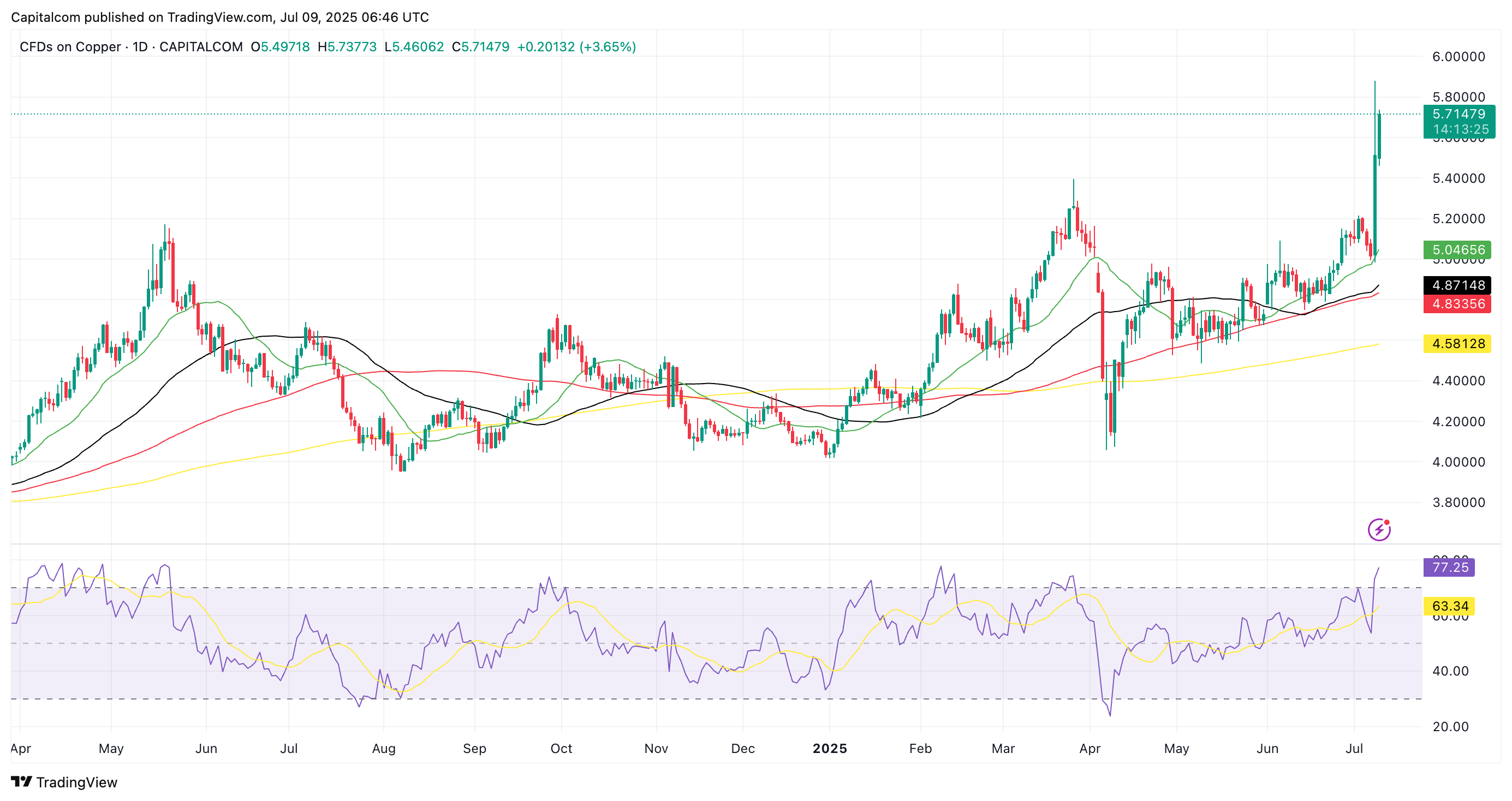Copper soars as Trump threatens 50% tariffs
Copper prices surge as Trump threatens higher tariffs but technicals suggest overbought conditions
Copper prices have skyrocketed following President Donald Trump’s announcement of a 50% tariff on copper imports, sending shockwaves through global markets. On Tuesday, U.S. copper futures surged 17%—the most significant single-day jump in decades—hitting a record high of $5.87 per pound before retreating slightly to close around $5.50. By Wednesday morning, momentum remained strong, with prices approaching the $5.70 mark. However, technical indicators such as the Relative Strength Index (RSI) are flashing overbought signals, hinting at a potential pullback if bullish momentum wanes.
Copper (XCU/USD) daily chart
(Past performance is not a reliable indicator of future results)
This announcement disrupted a months-long arbitrage strategy where traders imported copper into the U.S. in anticipation of higher prices, resulting in Comex inventories reaching their highest levels since 2018. The abrupt policy shift caught many off guard, leading to a scramble to adjust positions and contributing to the price spike.
Additionally, the tariff announcement has introduced uncertainty into the global copper market, with concerns about potential retaliatory measures from other countries and the broader implications for international trade dynamics. While the U.S. market saw a sharp increase in copper prices, other exchanges like the London Metal Exchange and the Shanghai Futures Exchange experienced declines, reflecting the complex and varied global response to the tariff news.
Furthermore, the sharp increase in price reflects the higher cost of bringing the metal into the country if tariffs are applied, but the impact will likely diminish as domestic inventory rises.
In the short term, copper prices are expected to remain volatile as markets adjust to the new tariff landscape. Factors contributing to this volatility include potential shifts in global supply chains, as exporters may redirect copper shipments to other markets, and the possibility of retaliatory measures from affected countries. Additionally, the U.S.'s limited domestic smelting capacity could influence price dynamics, as the country currently imports about half of its copper needs.
Ultimately, the dramatic rally in copper was triggered by a policy shift that caught the market off guard. The U.S. government’s move to impose steeper-than-expected tariffs has introduced a new layer of uncertainty into an already sensitive commodities landscape. With President Trump’s trade strategy known for sudden pivots, traders would be wise to stay alert for further developments that could reshape the outlook once again